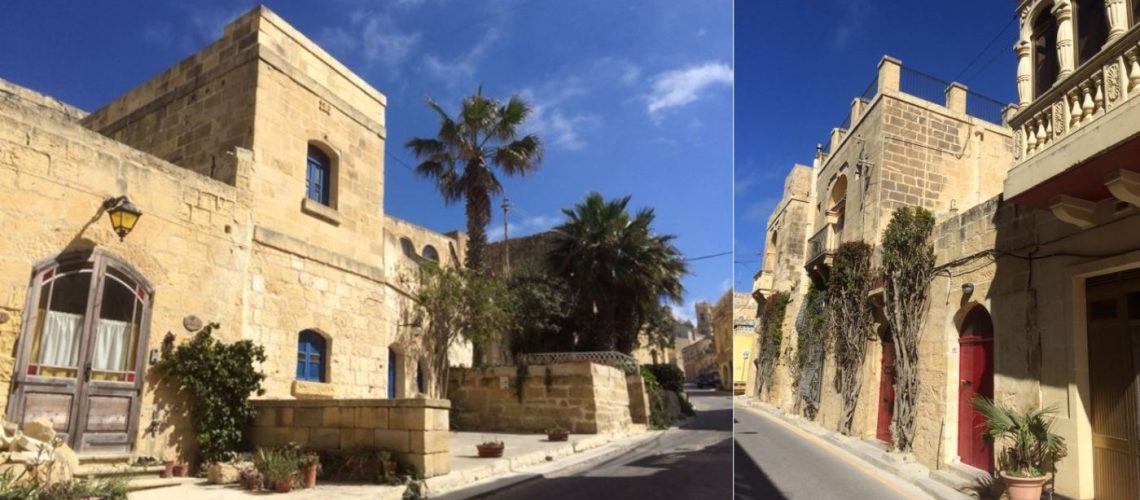Say ‘farmhouse’ across Europe, and in the mind’s eye you conjure a picture of a detached foursquare building resting alongside a scattering of barns in the middle of green fields. It would be likely to have windows scattered over two floors, perhaps painted white with colourful shutters flung open in a welcoming green Alpine valley, or equally it might huddle grey as granite, its roof pulled low on rugged windswept moors as wild horses gallumph through gorse.
Here in Gozo, however, this idea of a farmhouse should be set aside and replaced with something altogether different. ‘Razzett’ in Maltese translates as farmhouse because, as you’d deduce, it has been traditional accommodation for a farmer and his family over centuries past. However, although the phrase an Englishman’s home is his castle has been popularly-used since the sixteenth century, four-hundred-years-worth of Englishmen would be rather abashed should they compare their own abodes, whether wattle and daub or red brick, to the strong stone edifices found here in Malta.
Imagine in the middle of a village street, jostling against one another, a series of fronts of golden stone, each with a flat roof and small dark windows which are suggestive of a defensive fortress, although a decorative balcony might adorn the first floor over heavy wooden doors. While Henry Tudor dined in diamonds at Hampton Court and his serfs lived in hovels with wooden frames, the Gozitan population built heavy-duty homesteads with very thick walls to defend themselves from the plundering corsairs of the Ottoman empire. Many now stand like mini Norman Towers, their often-foreboding doors giving nothing away of their insides, the very antithesis of an ostentatious aristocrat’s Renaissance palace.
Yet every Razzett hideaway oozes history and character: generally wide double doors lead into a hallway (in which once a cart was stored) through which there’s a central courtyard, the main area of the home in time gone by, with a well and adjacent stone rooms to house animals. From this courtyard, an external staircase leads to a terrace above: the family lived in rooms on this first floor.
Stepping inside these extraordinary farmhouses today is like entering another world where the flavour of a historic banqueting hall is fused with the excitement and charm of Enid Blyton’s Castle of Adventure. They’re now the perfect fodder for Through The Keyhole fanatics: expect Escher-esque flights of steps from terrace to terrace, from floor to roof, and surprising combinations of dark beams and golden arches, worn millstones, ancient farmer’s tool and twisted ironwork, often teamed with stylish and contemporary luxury from wine cellars to lush poolside decks. Each is a wonder to explore.
And while each is different, one thing’s for certain: after a spell in a Gozo Farmhouse, neither Heidi nor Lorna Doone would want to go home. (& The Significant Other feels the same.)




